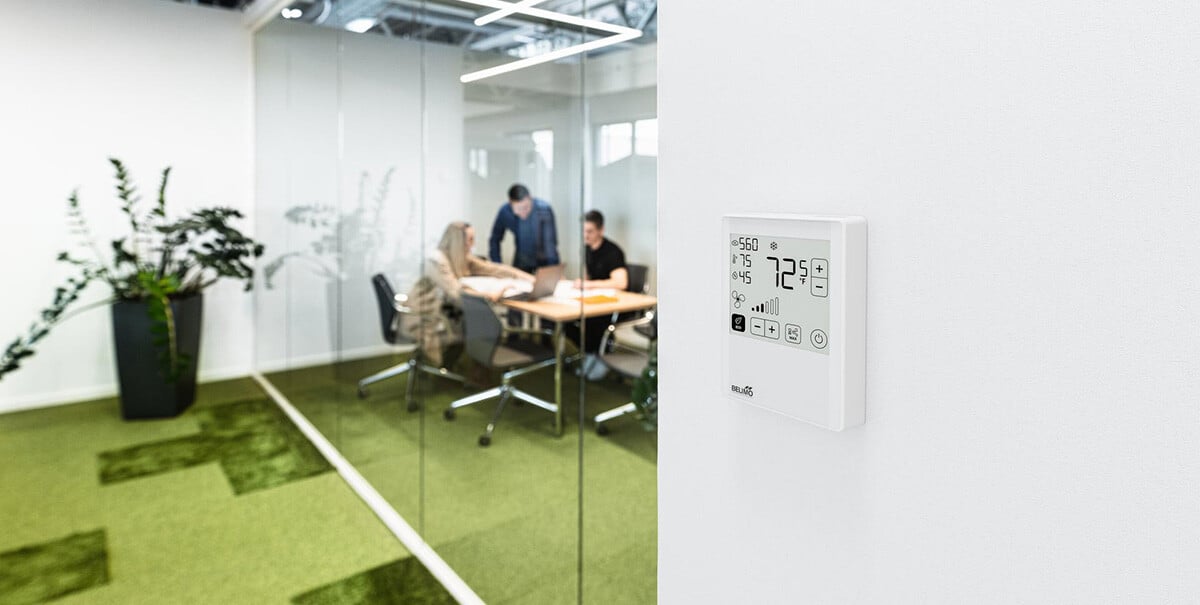Strategies for Sustaining Healthy Indoor Air Quality
Indoor air quality (IAQ) is a crucial factor in ensuring the health and well-being of building occupants. Good IAQ is defined by acceptable levels of carbon dioxide (CO2), humidity, temperature, and volatile organic compounds (VOCs). Poor IAQ can lead to severe health issues1, including cognitive difficulties, respiratory problems, and even premature death. Maintaining IAQ involves monitoring these parameters and taking corrective actions as needed.
Indoor carbon dioxide levels rise because people exhale CO2 when they breathe, and because of activities like cooking and using fireplaces. Elevated CO2 levels can cause symptoms like dizziness, confusion, and difficulty breathing. Humidity in buildings originates from outside air, leaks, and open water sources. High humidity levels can encourage mold, bacteria growth, and dust mites, which exacerbate allergies and asthma. Indoor temperature fluctuations are influenced by HVAC systems, electronic equipment, and changes in building occupancy, affecting comfort and productivity. VOCs, emitted from office furnishings, construction materials, and maintenance products, can cause headaches and breathing difficulties.
To achieve and maintain healthy IAQ, it is essential to adhere to standards set by organizations such as ANSI/ASHRAE. These standards provide guidelines for minimum ventilation rates and measures to minimize health risks. For instance, ANSI/ASHRAE 62.1-2022 defines acceptable indoor air quality as “air in which there are no known contaminants at harmful concentrations, as determined by cognizant authorities, and with which a substantial majority (80% or more) of the people exposed do not express dissatisfaction.”
Implementing strategies to improve IAQ includes regular monitoring and maintenance of HVAC systems. HVAC sensors play a vital role in this process by measuring temperature, humidity, CO2, and VOC levels. Faulty or out-of-calibration sensors can lead to inaccurate readings and poor system performance. Ensuring the proper operation and accuracy of sensors is crucial for maintaining IAQ.
Belimo room sensors offer a robust solution for monitoring and controlling IAQ. These sensors are designed to accurately measure temperature, humidity, and CO2 levels.
They feature a low wall coupling factor, ensuring that measurements are not affected by wall temperature. By integrating Belimo sensors into HVAC systems, facilities can achieve precise control over indoor temperatures, ensuring a comfortable atmosphere for building occupants.

In addition to maintaining a comfortable temperature, improving IAQ also involves increasing ventilation when indoor CO2 levels get too high. Belimo room sensors, in tandem with airflow measurement and control actuators, can communicate through building management systems (BMS) using BACnet, Modbus, and MP-Bus to control the amount of fresh outdoor air being brought into the indoor space. Based on real-time indoor CO2 measurements, this coordination ensures proper ventilation, creating a healthy indoor working environment for employees and students.
Proper maintenance of HVAC components, including regular replacement or cleaning of air filters, is also vital. Belimo Airflow Measurement and Control Actuators can measure differential pressure to monitor the condition of filters. This helps confirm that filters are functioning efficiently and informs maintenance when filters become clogged, thereby preventing a reduction in air quality and system performance.

The LMV-D3 is a differential pressure sensor, digital pressure/flow controller, and damper actuator all-in-one.
In conclusion, maintaining indoor air quality is critical for the health and comfort of building occupants. Utilizing advanced technologies such as Belimo room sensors and VAV systems can significantly enhance indoor air quality. Regular monitoring, diligent maintenance, and strategic adjustments to HVAC systems are essential for achieving and sustaining a healthy indoor environment.
- Lewis, A. C., Jenkins, D., & Whitty, C. J. (2023, February 8). Hidden harms of indoor air pollution — Five steps to expose them. Nature.com. https://www.nature.com/articles/d41586-023-00287-8

